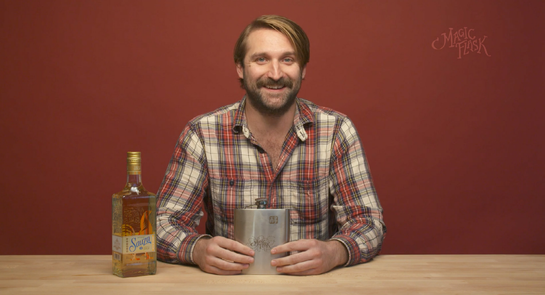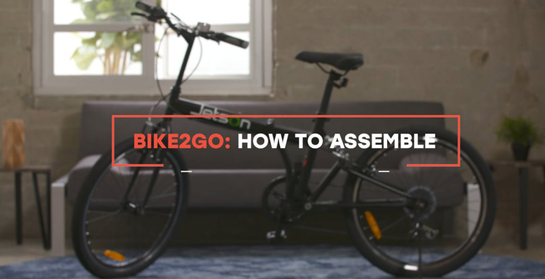Economic Downturn FAQ for Advertisers
Consider this post a breathing FAQ for all of your economic downturn questions, with answers and effective management strategies from our team of marketing experts.
Read More
At this point, it should come as no surprise that video content is considered essential for all brands — especially so for e-commerce brands. As an e-commerce professional, you’ve probably seen metrics touting video’s ability to build brand awareness, drive sales, and encourage repeat business. And as a consumer, you’ve probably noticed that video content is seemingly everywhere.
Despite the fact that virtually every brand could benefit from video content, not everyone is familiar with how to go about the process successfully. It can be hard to understand some of the specifics of production and distribution, especially if you don’t have prior experience with video.
That’s why our teams at Lemonlight and AdRoll came together to create these guides to share everything we know about using video to drive e-commerce brands to success. We’ll walk you through why video is so effective, how to begin to develop your video concept, best practices to keep in mind for the production process, how to distribute your content and create cross-channel experiences, and how to measure success.
In this article:
Why Video Works
Pre-Production Strategies
Awareness Stage
Consideration Stage
Decision Stage
Delight Stage
Let’s dive into why video is so effective for e-commerce brands in the first place. Two primary challenges for e-commerce brands are grabbing consumers’ attention and then providing them with enough information that they’re convinced about the benefits of your product or service.
Both of these challenges are addressed with video content. Video is proven to be effective in gaining consumer attention online. In one study, 85% of marketers responded that they felt that to be true. In another study, over 80% of marketers reported that video has helped them increase website traffic, generate leads, and increase dwell time across web pages.
As an e-commerce professional, you know that these results are hard to come by. Rather than investing time and resources into coming up with new and innovative ways to reach prospective customers and captivate them with your messaging, video can provide a simpler alternative to solving those same challenges.
Once you have a captive audience, video is also useful in conveying your product or service offering to prospective customers. Here are some statistics that illustrate this claim:
When you go beyond the statistics, video also provides value by means of adding authenticity to audience interactions. Video testimonials are especially useful for this as they link your prospective customers with actual customers. The dynamic nature of video helps audiences feel connected to the person sharing his or her experience, and hearing firsthand from an actual customer lends credibility to the content itself.
The result is an experience that both increases the viewer’s understanding of your brand and builds trust between the viewer and your company. As you can see, video solves many of the challenges that e-commerce professionals devote hours upon hours to trying to solve.
Unfortunately, video is incredibly underutilized for these purposes. Video sometimes gets a bad reputation, with people assuming that by nature, video content must be expensive, time-consuming, and impossible for the average person to execute. Thankfully, these are misconceptions that are often not the case at all. While, yes, filming a Super Bowl commercial or other high-profile content might fit some of those stereotypes, a Super Bowl commercial doesn’t need to be the standard for effective branded content. There are many avenues you can explore that are inexpensive, quick, and beginner-friendly.
Later, we’ll share our tips for simplifying production, but rest assured that you don’t need to be an expert to take advantage of video’s many benefits. And in pursuit of those benefits, anywhere your prospective customers are spending time online, your video content should be readily available for their consumption.
Once you’re on board with the concept of video, the first step is to begin developing your concept. Video isn't a one-size-fits-all approach, and there's an infinite number of directions you could choose to take with your content.
Regardless of your creative vision, there are a few parameters that should apply to any piece of content you create. First, your video should align with the goal of your content, which can usually be best attributed to the stage of the marketing funnel you want to engage in. Your content should also align with your brand’s tone and potentially your visual brand guidelines to present a cohesive image to audiences. Then, specifics like the length and dimensions will be somewhat tailored to the distribution channel.
Let’s take a look at the marketing funnel, also commonly referred to as the sales funnel or the buyer’s journey. The funnel follows prospective customers from the moment they learn about your brand through the time after they’ve made a purchase. The three stages are awareness, consideration, and decision, with each stage reflecting the thought process of the consumer in that moment. Many marketers will also add a fourth stage for “delight,” aiming at the concept of customer retention after a purchase has been made.
Video Marketing Funnel
As you might be able to guess, your video content should look very different depending on the stage of the funnel you plan to use it for. A video enticing someone to make a purchase should have different priorities than a video intended to help someone learn about your brand for the first time.
To break the process down in more detail, we’ll dive into each of the stages of the marketing funnel to take a closer look at what the ideal video would look like. Note that this breakdown doesn’t mean you should only use video for the stage you might be struggling with or need to prioritize.
The most effective video marketing strategy would include video at every stage, with the videos helping to seamlessly bring the viewer through the steps more efficiently. When done right, using video like this helps consumers feel more informed and confident in their decision to engage with your brand. With that in mind, let’s take a look at the awareness stage.
The awareness stage is typically characterized by the buyer realizing that they have a problem that needs to be solved. In other words, they identify a need. At this point, the buyer also begins to identify where the problem fits into their priorities. Is this an immediate need that needs to be addressed ASAP, or is it a minor consideration that should be addressed over the next several weeks or months?
As a marketer, before you plan for video content at all, you should try to understand as much as possible about how your buyer is feeling at this moment. You may already have this data or you may not, but think critically about what the need is that your brand is prepared to fill and whether it’s likely a low or high priority for your customer. Also think about the emotions attached to the decision as emotion is a powerful driver for purchase, and assessing how your customer might feel is a great way to understand them on a deeper level.
For your brand, the key to success in the awareness stage is being visible to your customer when their need arises and they become conscious of it. It’s your job to show up in search results, have an informative website, and present your viewer with content that clearly addresses how your product or service fills the need they’ve identified.
So, what should video content look like for the awareness stage? The key here is really just to engage your leads and inform them that your brand exists with a potential solution to their problem. You don’t want to push a sales pitch or overly-detailed content at this point. You just want to open a conversation that will hopefully continue as the customer moves forward in their decision-making process.
There are a few video styles that are especially effective here, including commercials, explainer videos, and educational videos.
Commercials briefly outline the problem your brand solves and highlights your value proposition — what makes you unique compared to your competitors. Commercials should be brief, typically no longer than a minute, and the tone and messaging should align with your brand’s overall look and feel.
Explainer videos are similar, but they give a more detailed explanation of how your product or service solves the problem in question. Rather than giving a broader overview of the brand, explainer videos focus on the problem and solution for the consumer.
Education videos are also similar, but they involve less of a sales pitch. Rather than positioning your brand as the solution to the problem, the focus is typically providing informational content that helps the viewer understand the problem or solution more clearly. After watching, viewers should feel more confident in their interpretation of the problem and potential solutions.
Image: Toshiba Explainer Video
Next comes the consideration stage. This is when your prospective customer is actively searching for a solution for the need or problem they identified in the awareness stage. They might be conducting research, looking into your company and competitors, asking around to see what others have experienced, or contacting companies.
By this point, you’ve engaged with your prospective customer at least once. They’ve had one or more touchpoints with your brand and may or may not remember how your product or service works or how you’re different from competitors. Your goal with consideration stage video content is to convince the viewer that your brand is an effective solution to their problem.
Three types of content are especially useful here: testimonial content, FAQ content, and product content. You’re probably familiar with testimonial content, where actual customers share their experience with the brand on camera. The benefit of testimonial content is that it paints your brand in a positive light in a manner that audiences perceive as authentic. If your existing customer shares the exact same value proposition that you shared in the awareness content, it’s more believable and convincing coming from a customer.
Image: Magic Flask Testimonial Video
FAQ content is useful for getting ahead of potential roadblocks that buyers might be experiencing. If they have questions or concerns that you fail to address, you might be eliminated from the prospects for the rest of their search. If you can address those questions head-on in an FAQ video, though, you might propel yourself to the head of the pack because you’ve eliminated doubts.
Product videos show your product in action, covering what it is, how it works, and how it solves the problem for the end-user. This is similar to a commercial or explainer video, but it goes deeper into the explanation or analysis of the product itself. You’ll also want to double down on how your product differs from competitors in this video. After all, the next stage is where the buyer makes a decision, so give them information that will help them narrow the playing field between you and your competitors.
For more on how to create product videos:
Next comes the decision stage. Making it here is no small feat! However, the stakes are also higher at this stage than the others we’ve passed through. In this moment, the buyer will decide whether your brand is the solution to the problem or not. Success in this stage is measured by conversions, so you’ll need to do what you can to close the deal.
Note that in general, at this stage you’ll be providing more detail than you have previously. This is the time to push stats, case studies, reward incentives, or special offers. Any information you have that has the potential to sway the decision in your favor should be included at this point.
Three video types that work well here are tutorial videos, before and after videos, and personalized videos. Tutorial videos walk through a step-by-step assessment of how the product or service works. The goal is to provide a comprehensive view of the process so that the viewer understands exactly what to expect if they make a purchase. You’ll want this content to be as clear and linear as possible to eliminate doubts and make the process easily digestible.
Before and after videos are useful in making the final pitch for viewers to buy because they illustrate the “after” phase, where the problem that’s been plaguing your viewer has been solved. Dramatic effect is also at play here, where the stark contrast between “before” and “after” helps emphasize the impact of your brand.
Before and after videos don’t work universally across all industries because there isn’t always a clear “before” and “after” to display, but they’re effective for any physical transformation brand (think fitness solutions, home repair services, cleaning products, etc.).
Finally, personalized videos are becoming more of an industry-standard, especially for high-stakes sales. For example, if you’re a B2B company selling a software service to a large corporation, you could send a video of yourself explaining how your brand is a solution for the exact company in question, addressing their specific pain points, and acknowledging any decision-makers by name. This adds personality to the sales process and can be incredibly effective when competitors are sending mass-produced content with no customization.
Lastly, in the delight stage (which is sometimes referred to as a formal stage in the funnel, and other times is included as the timeline that comes after the funnel is “completed”), you want to engage with your customers to make sure they’re enjoying their experience.
There are two goals here. You want to make sure that your product or service is effectively meeting your customer’s needs, and you also want to encourage them to recommend your brand to others or come back for repeat purchases in the future.
The primary type of video that’s useful here is a video that walks your customer through their experience with your product or service. This will mean something different for every industry. If you sell a software tool, your video might include a step-by-step installation walkthrough to ensure that your customer is able to access the tool correctly. If you sell clothing, you might send a video offering multiple ways to style or accessorize your products.
Image: Bike2Go How-To Video
Regardless of the industry, the point is to make the use process as simple and straightforward as possible. If you think there might be any doubts for your customers after they receive your product or service, this video should address them.
Ready for the next steps? Check out Video Best Practices Part 2 to explore production tips and tricks and everything you need to know about video distribution.
If you haven't yet, be sure to download our "Video Best Practices" eBook!
Last updated on April 23rd, 2025.



